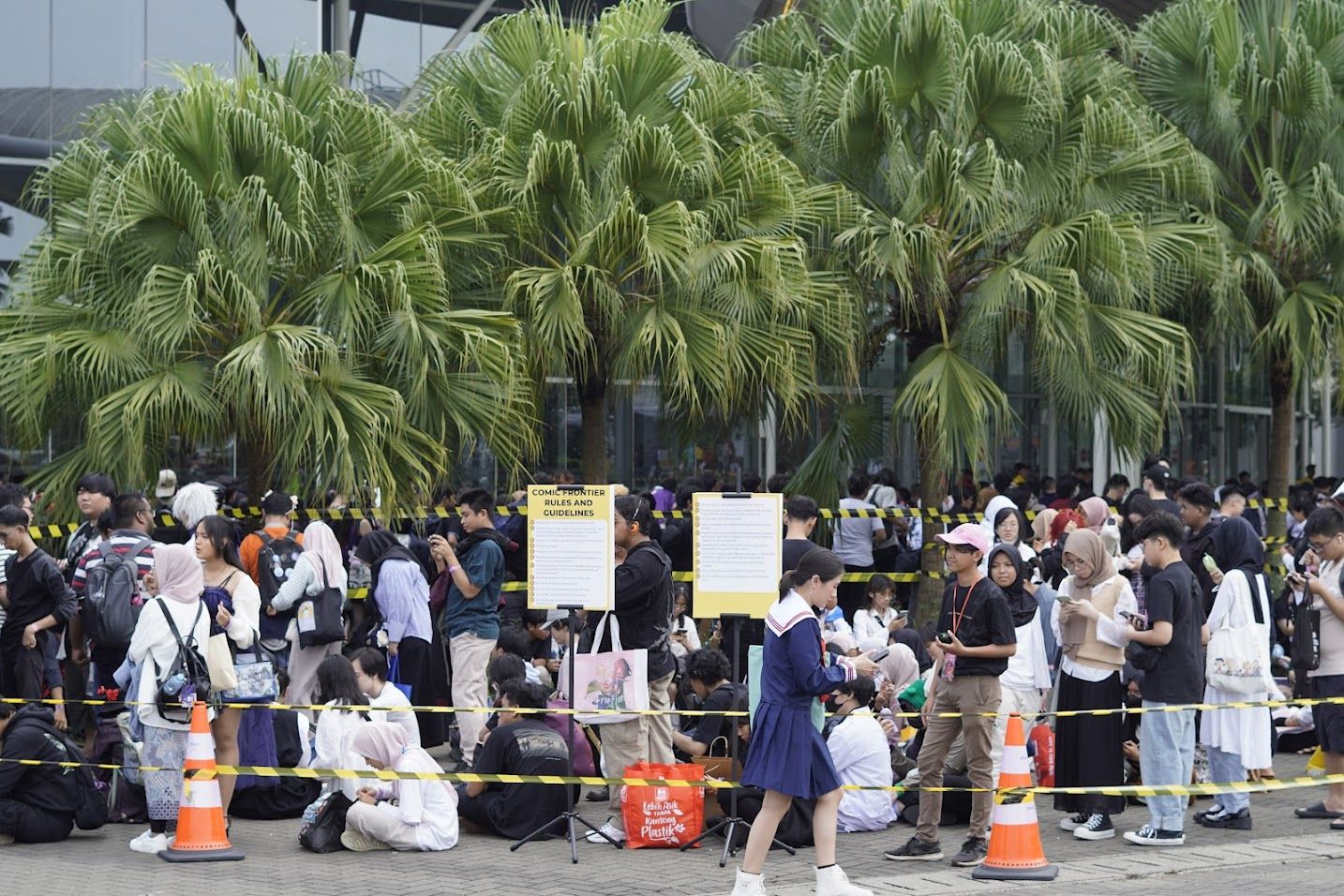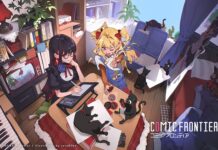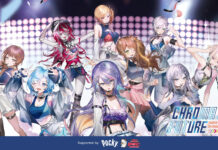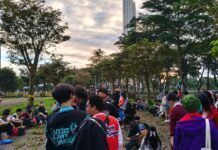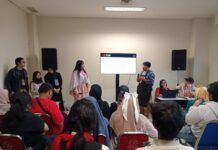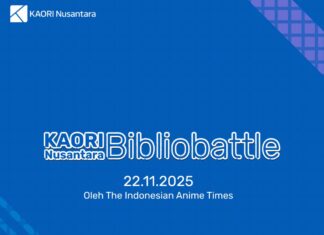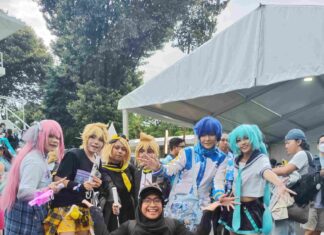This article was originally published on 12 November 2024, before the Comifuro XX event, on our Indonesian Site. We choose to republish this article in our English language because the topic of this article is still relevant for today’s comic market discussion, especially regarding to Comifuro event. The original Indonesian article can be read here.
Comic Frontier 20 will be held on 24–25 May 2025 under the branding Comifuro XX. The Roman numeral XX was probably used to make the name sound cool. But despite being held at the Indonesian Convention Exhibition (ICE) five times already, Comifuro continues to face issues that could escalate if not addressed properly. Circles have expressed frustration, claiming that the presence of concerts negatively impacts their sales. However, this is only a small fraction of the broader challenges that have accumulated, forming a proverbial ticking time bomb for Comifuro XX.
Comic Frontier 19 was the first event to feature a concert. With guest artists brought in by event sponsors, it was a welcome addition, signalling an effort to attract new visitors while adding value for loyal visitors. However, as with other Japanese artist concerts in Indonesia, “tier 2” or “tier 3” performers do not always draw significant crowds. With concert areas filled to only around 40–50 per cent capacity, questions arise as to whether the cost-benefit ratio is justified, regardless of whether the concert is self-managed by Comifuro or organised by third-party promoters. This is particularly unfortunate given the high-quality setup of the concert area, which surpasses typical standards in sound and lighting compared with similar events, such as AFA ID.
While hosting concerts is an innovative move that deserves recognition, it does not truly address the plateauing attendance at Comifuro. If Comifuro 15 marked a jump from 13,000 visitors in 2020 to around 20,000 per day in 2022–2023, the stagnation observed at Comifuro 19 is a warning sign. Future first-day attendance may stabilise or plateau at 20,000 to 25,000, signalling a “glass ceiling” that highlights fundamental issues requiring immediate attention or disruption.
This raises important questions: why do some people choose not to attend Comifuro? Why are some reluctant to travel to ICE? Conversely, why do others persist despite the cost, distance, and fatigue? Surveys of visitor satisfaction could help answer these questions. To gain insight, we could compare Comifuro with Comiket, the Japanese comic market that inspired it.
A Tale of Two Comic Markets Struggling to Compete
Based on my experience attending Comiket, even with its charm, the 2024 event is one where the comic market is grappling to survive. Comiket faces numerous modern pressures: digital distribution, smaller events with “only” 100–500 tables, online ordering, and subscription services such as Fansly or Patreon. Doujinshi can now be read at home, so why endure the heat and queues? Furthermore, Comiket now charges for entry, unlike in the past. Selling tables is also increasingly complex: circles may now purchase tables for two days if serving different fandoms, or two tables for a single day. Previously, only one table was permitted per day. Table fees are steep, at around JPY8,000 (approximately IDR 800,000).
This context reflects a mature and saturated Japanese doujinshi fandom. In Japan, infrastructure supports the entire market chain. Vendors do not need to transport goods personally. Printing companies such as Sun Group can handle production. If the books are not sold out, courier services like Yamato can send them back to any place. Book publishing costs in Japan are considerably lower than in Indonesia, with a variety of paper qualities available.
Expecting an Indonesian comic market event to provide sustainable income for creators is unrealistic if the ecosystem is not developed and costs remain high. Because of these factors, the book prices would inevitably rise, which would limit the sales. Circles must factor in logistical expenses just to sell their books at Comifuro. If these problems are solved, it will greatly help not just Comifuro but also the Indonesian comic industry in general.
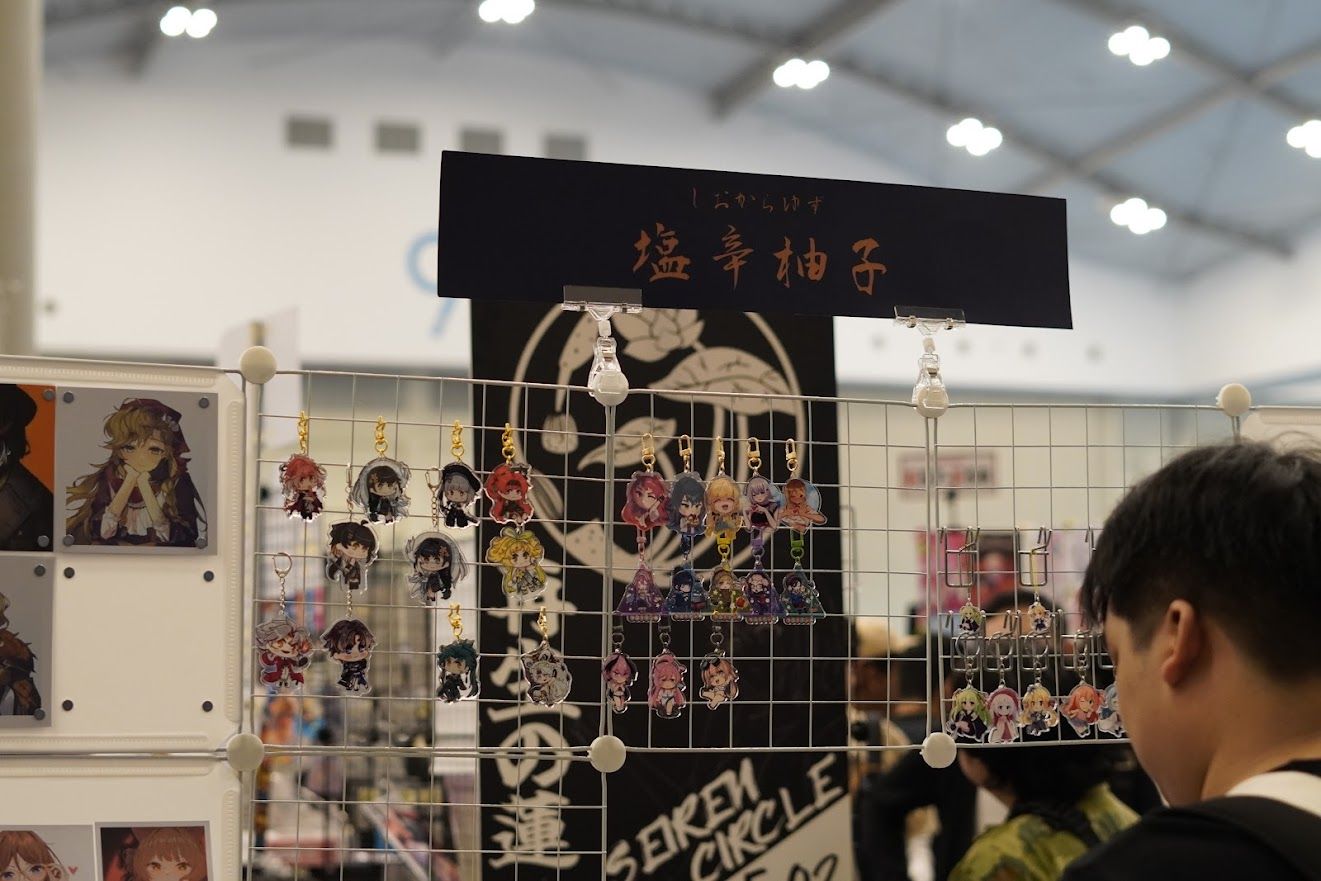
Costs and Energy Drained Before Arrival
Back to Comiket: while the venue is still located in central Tokyo, coming here is always exhausting. Visitors must queue for 1-2 hours. If we compared it to Comifuro, travelling to ICE in Cisauk is comparable to commuting to Makuhari Messe. The distance from Kaihinmakuhari Station to Tokyo Station is 42 km, while the distance from Cisauk to Tanah Abang is around 32 km. For those accustomed to taking the commuter train (KRL), travelling 30 km from Jakarta or 70 km from Bogor might not seem too tiring. However, for many people unaccustomed to travelling long distances by public transportation, riding the KRL is incredibly draining.
Another service that visitors can use is Taxis. However, they are also expensive. They could cost around IDR 150,000, excluding the toll. Because of this, many visitors must stay near ICE, diverting funds that could otherwise support local comic creators. Ticket prices have steadily increased, from IDR 50,000 at Comifuro 15 to IDR 75,000 at Comifuro 19. Attending Comifuro is therefore costly and physically taxing.
Even in a mature market like Comiket, most circles do not break even. In Indonesia, with a more diverse economic demographic, organisers must closely observe whether new visitors come to genuinely purchase or merely to experience the event, and how ticket and travel costs affect spending. A comic market event can’t provide a sustainable income source for creators when the visitors’ money is already drained just to pay for the transport and accommodation fees.
If ICE is the only choice for the event organiser, then reducing travel friction is crucial. Shuttle services from central locations could assist those unwilling or unable to use public transport. Comfortable, reasonably priced buses could minimise hotel expenses, enhancing the experience and enabling visitors to spend more at the event itself. We can collaborate with the private sector or bus companies for this. Convince them that the market is large, and advertise heavily so that many people know about it.
Moreover, the doujinshi sales session should be concluded at 1700, and the area should be cleared at 1800. Even in Comiket, sales sessions conclude by 1700. Some have suggested extending Comifuro into the late evening. I disagree. Finishing sales in the 1700 allows visitors to return home, rest, and even socialise with fellow animanga fans after the event. Remember, not everyone can take paid leave on the next Monday. Concerts can start at 1800, with sufficient transport options available after the event.
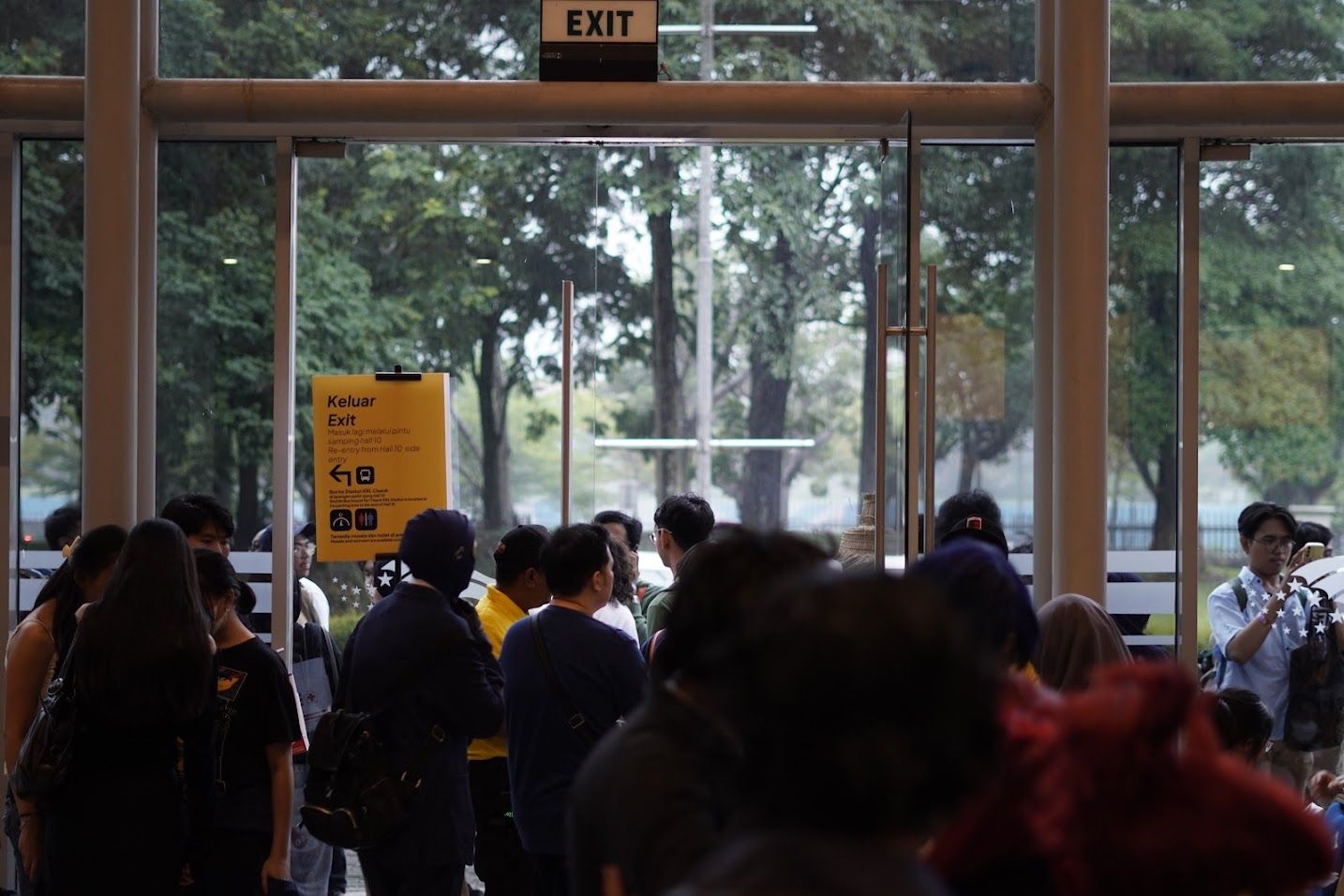
Listening to Visitors
There are many areas to be improved. Visitors already speak about the problems on social media, Discord, and even directly to organisers. Issues include poor wayfinding, weak mobile signals (which can disturb the transaction process), inadequate rain contingency plans, and suboptimal online catalogues. Reputational risks also arise from third-party mishaps, such as ticketing website failures.
Concerts are welcome but should not overshadow the doujin market. Comifuro should retain its focus on the comic market and its targeted visitors. While “changing gears” to something like Comic Fiesta or Anime Expo may seem tempting, it could also be a distraction. Diverting resources to stage concerts or manage performers could “blind” the organisers from addressing fundamental issues.
Constructive criticism is challenging, but it is also necessary for a service-based business. Visitors who pay the ticket prices expect professionalism and adequate service. Strategic planning, evaluation, and a strong commitment from top management are essential to meet visitor expectations. Business considerations must always remember that organisers are serving people, whose needs and feedback should be respected.
With these improvements, I hope Comifuro can avoid missteps and emerge as a stronger, more rewarding event for all stakeholders: visitors, vendors, and performers alike.
Also read:
Has Comiket Changed Post Pandemic? Interview with Comic Market’s Organizer
The Indonesian Anime Times | Original article and photo by Kevin W | Translation by Dany Muhammad | This opinion represents the author’s personal views and does not reflect the views and editorial policy of The Indonesian Anime Times or KAORI Nusantara

